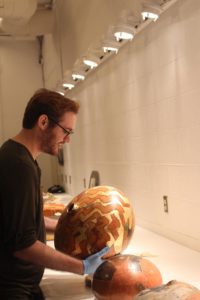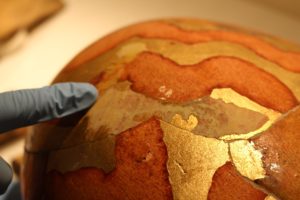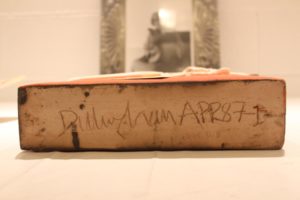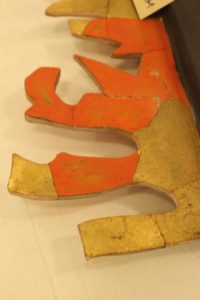Ceramics and the Environment in the Late-Twentieth-Century American West
EMERGING SCHOLARS > SUMMER RESEARCH GRANTS
by Matthew Limb, PhD. Candidate, University of California, Santa Barbara
In the summer of 1974, Studio Potter magazine addressed the growing concern for an ethical ceramics production on the part of environmentally concerned potters. Paul Soldner, a ceramicist and educator based at Scripps College in Southern California, wrote in the introduction to the issue that “the traditional methods of pottery making [were] in serious trouble.” Soldner outlined a threat to the craft created by the rise of governmental regulations of energy, national safety standards, and a desire to implement new technologies with lower environmental impact.
Despite his misgivings for bureaucratic regulation, Soldner remained optimistic that potters would continue to find a way forward, saying that “we are already beginning to seek out our future.” Articles within the issue tackled topics ranging from the possibilities of nuclear, solar, and wind energy for powering kilns to the methods of restoring the minerals and materials used in the process of production. The earth and energy-based origins of ceramics made environmental concerns a key issue for potters. This discourse has gone unacknowledged within the narrative of American art, however, and the history of traditional craft media remains an unwritten chapter of the environmental art movement.
This omission is surprising in light of the intimate connection between the pottery craft and the land through the processing of raw materials. As a natural material, clay offers an ideal platform to explore the negotiation of human experience and sensation with the earth. The small scale of the ceramic object provides an immediate and intimate experience with the environment that is absent from most forms of artistic production.
Rick Dillingham (1952–1994) was an American studio ceramist who worked alongside artists from indigenous nations in the American Southwest to better understand their production methods. He employed these techniques to engage more eco-friendly materials, processes, and forms. Dillingham exclusively used earthenware clay he personally gathered from the Arizona and New Mexico deserts. He was adamant that no commercial products or materials were incorporated into his ceramic vessels. He gathered minerals for his glazes from abandoned mining projects across New Mexico, fired his pots in hand-dug pits in his backyard or on the land of friends, and used cow dung gathered from local ranches as his source for fuel. Much of Dillingham’s process was developed out of his interest in and exposure to indigenous culture and pottery techniques. He learned pit firing while researching and working with the potters of the Pueblo nation. After firing, each pot was broken and then pieced together, effectively rejecting the sanctity of the vessel and drawing allusions to reassembled ceramic objects from archeological digs (Figures 1, 4).
Dillingham produced vessels in three main forms: the globe, the gas can, and the tall cylindrical vase. The globes are quite large, and ornately patterned with many colors and various designs. Cracks from the reassembled pieces create the intricate surface ornamentation. Dillingham believed that the globes were not complete until they were held by the viewer (Figure 2). In so doing, the viewer merges with the vessel and becomes simultaneously connected to the earth through the performance of a ritual that Dillingham suggested linked the viewer to the land and its history; thereby merging the present with pre-history in a single moment.
The gas can form developed out of his frequent travels across the Southwest and the necessity of carrying additional fuel in his vehicle due to the sparse population and lack of amenities, including fuel stops. Each of Dillingham’s gas cans embodies the consumption of energy through allusions to fire and smoke found in his glazes and the slabs of clay often attached to the side of the form in the shape of flames, creating a ‘burning’ effect (Figure 3, 7). Dillingham’s interest in the gas can is traceable to his environmental commitments and experiences. He lived in Ventura, CA, when the 1969 Santa Barbara oil spill occurred, prompting a lifelong commitment to environmental justice. As a ceramist, Dillingham was also concerned about energy production and consumption. Throughout his time in Santa Fe, he often commented on nuclear energy in both his art and in letters to his friend Beatrice Wood, the famed potter and centenarian.
By digging their own clay, gathering materials for their glazes from abandoned mines, and experimenting with eco-friendly firing practices, potters sought to foster an ethical ceramics production. Through these actions, they engaged in a unique relationship with their environment and the land, its use, history, and ownership. Ceramists working in the American West faced a myriad of socio-ecological issues in their practice: corporate mining, nuclear testing and waste, oil spills, an energy crisis, the (de)colonization of indigenous lands, and the cultural appropriation of indigenous histories. The connection between maker, materials, and the land spurred a politically radical approach to art production that challenged the divisions between art and life and fostered a desire for socially aware, ethical forms of making.
Matthew’s research was supported, in part, by a 2018 summer research grant from the Trust through the generosity of the Decorative Arts Society of Orange County.
NOTES:
1 Paul Souldner, “Introduction,” Studio Potter 3 no. 1 (Summer 1974): 34.
2 Ibid.







